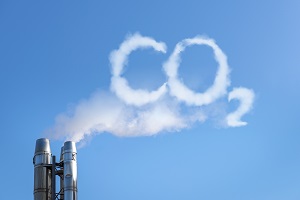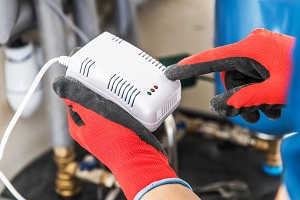Most people have a basic understanding of chemistry, which is why there is some confusion for the average person when it comes to recognizing carbon monoxide from carbon dioxide. While the two substances share a common bond through carbon, they have different chemical properties and physical characteristics that distinguish them. They also pose different threats to human health, which can be important to consider when deciding which gas detection system best meets your needs.

Whether you need a CO2 gas detector or CO gas detector depends on your industry and the gas present creating a potential workplace hazard. The disparity between the two chemicals is more than the simple presence of a single oxygen atom, and some of those properties can have an impact on employee safety.
Chemical Differences
CO2 and CO are similar in that they both feature bonds between carbon atoms and oxygen atoms. However, carbon monoxide features a molecule consisting of one carbon atom bonded to one oxygen atom in a triple covalent bond. Carbon dioxide features a carbon atom bonded with two oxygen atoms with a regular covalent bond to form a molecule. Carbon dioxide is produced when complete combustion occurs. That means that a hydrocarbon is involved in a chemical reaction with water, and the result is a carbon dioxide molecule and a water molecule. Carbon monoxide is produced by incomplete combustion, which occurs when there’s a limited amount of available air that restricts the molecule to a single oxygen atom.
Where It Occurs
Another difference between the two chemical compounds is their natural occurrence. Carbon dioxide is a key component in the Earth’s atmosphere and is critical for the biological processes of all plant life. It’s naturally present in the atmosphere and stems from both natural processes and human activity, as people and animals breathe in oxygen and exhale carbon dioxide. Carbon monoxide, however, isn’t naturally present in the atmosphere. It doesn’t survive in the atmosphere for long because, unlike carbon dioxide, it’s vulnerable to oxidation processes. Once created, it can accumulate in enclosed spaces and remain there for some time if not vented.
Physical Properties

Carbon dioxide and carbon monoxide do share some common physical properties, though with two notable differences. Both gases are invisible, colorless, odorless, and tasteless. However, the primary difference in physical properties is that carbon dioxide is nonflammable. In fact, a flame will cease to burn in the presence of carbon dioxide. Carbon monoxide is considered flammable and will burn in the presence of flame. Also, carbon dioxide is considered a nonpoisonous gas, while carbon monoxide is poisonous and potentially lethal.
Health Hazards
Another key point of differentiation between carbon dioxide and carbon monoxide is the risk they pose to human health. Carbon dioxide is generally considered a safe gas because it’s a natural by-product of the process of respiration. That said, there have been rare cases in which carbon dioxide can build up in an enclosed space and pose a risk for suffocation since it takes up the space that would normally be held by oxygen. Excess carbon dioxide exposure can cause headaches and dizziness. Carbon monoxide, however, is dangerous in any concentration or exposure. When inhaled, carbon monoxide binds to the hemoglobin that would usually transport oxygen to the tissues in the body. That prevents tissues from being adequately oxygenated, which leads to slow suffocation. Because the gas is undetectable with the five senses, many who are exposed don’t know they’re being poisoned. Symptoms of exposure include headache and listlessness.
While carbon dioxide and carbon monoxide are only separated chemically by the presence of an oxygen atom, they pose different threat levels in a workplace environment and have many varying properties that distinguish them. DOD Technologies values the safety of all personnel and work environments by offering a variety of portable and fixed gas detection systems for your needs. Do you have a question regarding CO2 or CO in your application? With more than 150 years of combined instrumentation and application knowledge, DOD Technologies is prepared to offer its expertise and solutions for your toughest requirements while keeping you, your employees, and your equipment safe.
Contact us today via phone at (815) 788-5200 or through our web form.










